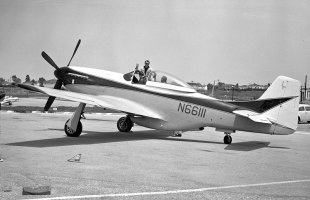Michael, some quick basics about DXT textures-
DXT3 is the "standard" format for FS9 textures. These textures are compressed, as you noticed, and can also contain a "separate" alpha channel to control things such as how "shiney" the texture appears.
DXT1 is, well, I really don't know why we use DXT1 textures. Mostly, I guess the idea is to use the alpha channel to make parts of the texture completely transparent. The best example of DXT1's are the patches on the pilot's uniform for Kirk Olsen's F-16 Vipers. I've had bad luck with DXT1's so I usually convert them to DXT3's. DXT5 textures are bad news for FS9. If you drop a plane that uses DXT5's into your main aircraft folder, FS9 will lock up when you try to start it. DXT5's are reserved for FSX and later titles, a DXT5 texture's alpha channel
s contains surface bumps and distortions (3D rivets). I have no experience with FSX and later, so I'm going by what I read.
Getting back to DXT3, since the texture (and the alpha channel) are compressed they tend to load faster in the game.
I know some of you re-painters swear by 32 bit textures (plus alpha channels) because they look so good (and they do), but 32 bit textures will eat into the frame rate a bit when you load the plane into FS. If you come from the "FSX generation" where 30-35 FPS is considered normal, 32 bit textures are no big deal. Some of us

believe that
Life Begins At 60 (FPS) and we can
see the difference between 32 bit and DXT3 in the form of frame stutters and over-all smoothness.

Using DXT3 for ground and scenery textures? Sure, they work just fine.

Can all aircraft (and scenery) use DXT textures? DXT3 is recognized by FS9 and FS2002 so there should be no issue. IMO, it also comes down to which program was used to compile the 3DO (model) but you would have to use a really old compiler to see any problems.
Are there any downsides to DXT's? The only one I can think of is if you wanted to re-paint a plane that used the old 256 color format , like .#af files.
I really had to think about this one. There are plenty of DXT .#af files out there.
Programs to convert (or change) DXT files-
There are only two I know about for repainting aircraft in FS2002 and FS9.
-Martin Wright's DXT2BMP converter. It was my go-to program (along with Paint Shop Pro) for many years. The only problem with DXT2BMP was if you tried to convert a DXT file to BMP then convert it back to DXT. DXT files had a bad habit of "blowing up", what I call the "mashed potatoes" effect. If you ever tried to use DXT2BMP on metallic (bare metal) textures, you know what I'm talking about. I thought this may have been due to not having enough RAM, but its a deeper problem. Back in the day, we all KNEW that you couldn't re-convert DXT's. That was just the way life was. Until.....
-FS Repaint. FSR was more of a curiosity when it first came out. You could see the entire plane while you drew stuff directly on the textures. That made FSR super-handy for figuring out which texture went where and which part of that texture covered a certain area on the plane. You could assign a paint program to work with FSR but it was really meant to work with MS Paint.

Like I said, it was more of a curiosity.
Several years ago, Windows did a major update to MS Paint and, WHOA NELLY, did that change the game. 
FSR is still a bit of a challenge to use. It isn't the ideal tool if you need to do pixel-by-pixel work but all you have to do is EXPORT a texture to see how FSR does it's thing. DXT textures still tend to distort slightly, but you really have to squint your eyes to find it. I still use an earlier version of FSR that Abacus sold as payware, but its still available for download
as freeware. Just google "FS Repaint" and "download" and you should be able to find it. FSR will display
any texture format it sees on an airplane, which makes it a little tricky if you want to convert DXT5 textures to DXT3 format, but its still the most painless way to go. If you're used to DXT2BMP, it can take a little effort to get in the groove with FSR.

 believe that Life Begins At 60 (FPS) and we can see the difference between 32 bit and DXT3 in the form of frame stutters and over-all smoothness.
believe that Life Begins At 60 (FPS) and we can see the difference between 32 bit and DXT3 in the form of frame stutters and over-all smoothness. 




